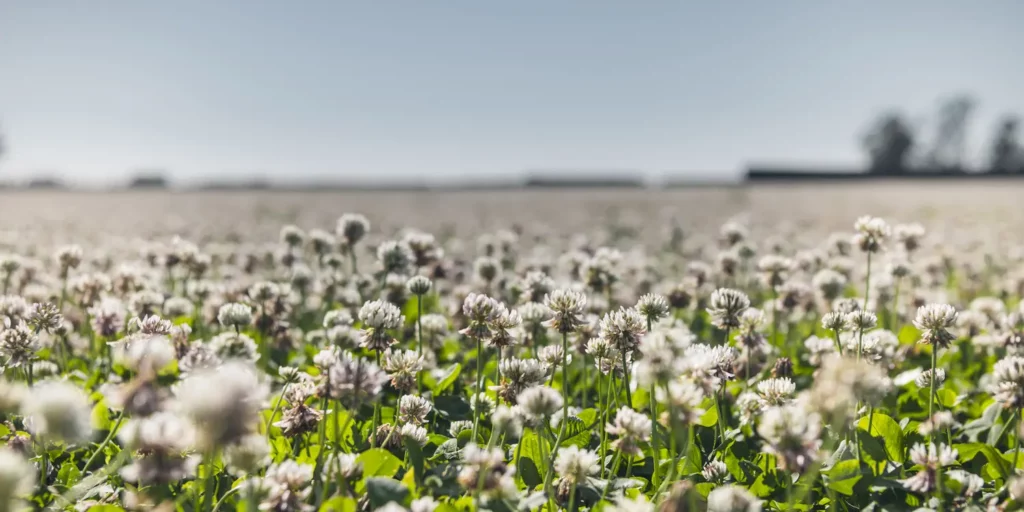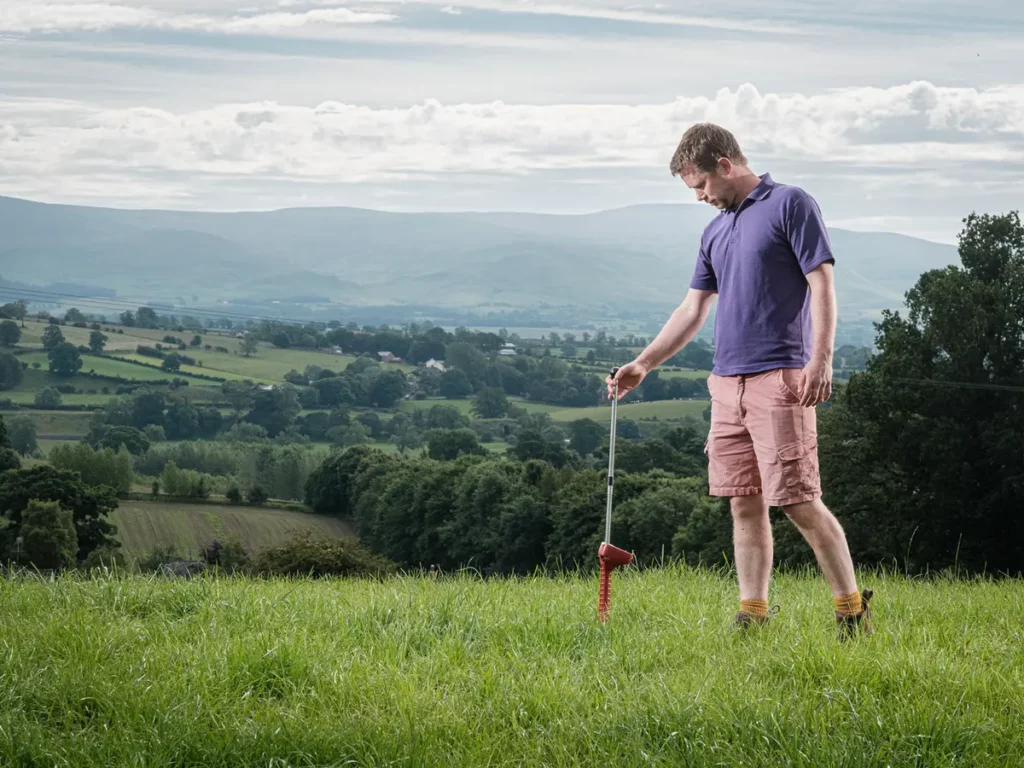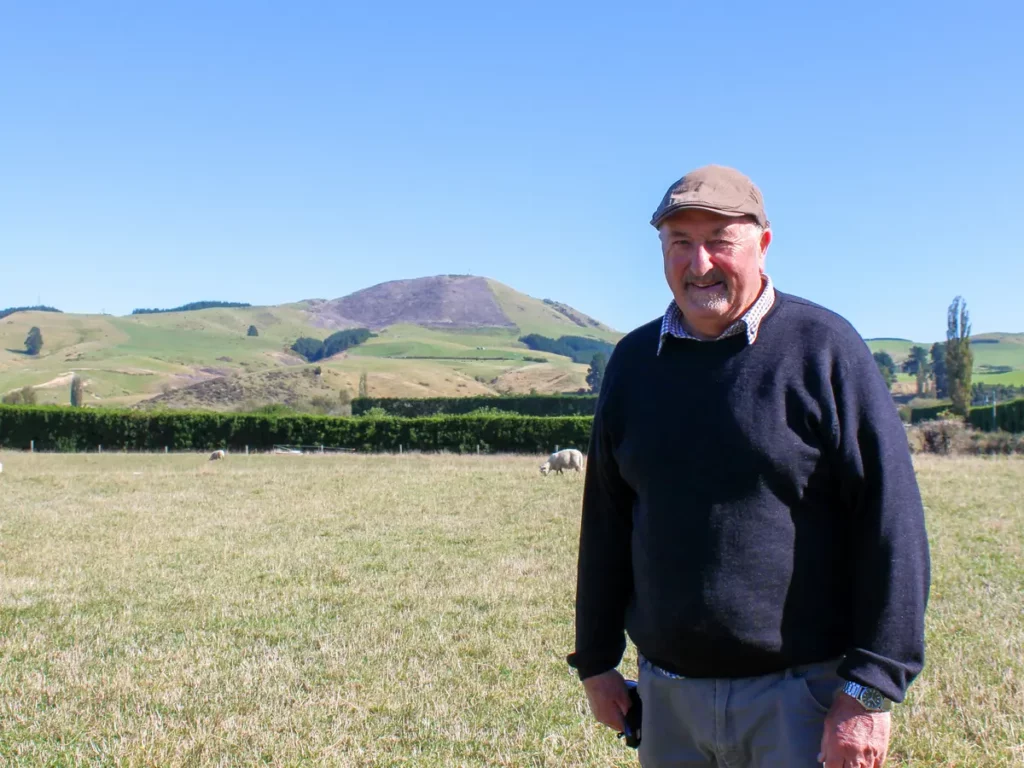Guides What is DoubleRoot hybrid clover?

Germinal’s game-changing clover has more than traditional benefits. DoubleRoot is a world-first hybrid clover with a unique dual growth habit, enabling it to withstand extreme cold and drought conditions. Discover how it grows and what it brings to grassland farming.
What are the benefits?
- Unique dual growth habit with stolons and rhizomes
- Strong root mass captures more carbon than grass alone
- Fixes around 150kg of nitrogen per hectare per year
- Enhances soil fertility
- Survives temperature extremes from -30°C to +30°C
- Increased drought tolerance
- Tolerates hard grazing
- Supports biodiversity
How does DoubleRoot grow?
A clover like no other
Initially growing like white clover, DoubleRoot’s deep taproot begins to break down in the first year and horizontal stems called stolons start to grow along the ground. These spread out and new plantlets form along them.
Because stolons are exposed, they’re susceptible to drought, cold, and grazing damage, reducing clover’s ability to spread in suboptimal conditions. Unlike traditional white clovers, DoubleRoot also produces roots under the soil surface called rhizomes that also form new plantlets.

This growth habit gives DoubleRoot the ability to withstand greater environmental stress and produce forage when water is limited. Suitable for a wide range of climates and soils, DoubleRoot is more tolerant of dry conditions and can recover from colder temperatures better than conventional white clovers.
Who developed DoubleRoot?
Pioneering forage for farming futures
DoubleRoot was bred over 30 years at the Institute of Biological, Environmental and Rural Sciences (IBERS) at Aberystwyth University. Today, the specialist plant breeding team at Germinal Horizon is developing new DoubleRoot varieties with enhanced benefits for ruminant livestock farming.
Clover in sustainable food production
DoubleRoot is playing a vital role in optimising nitrogen from legumes to reduce emissions in grassland farming and is a primary part of NUE-Leg, a £4.7m UK government project.
Through NUE-Leg, we aim to increase the natural nitrogen fixing potential of DoubleRoot to 300kg N/ha per year. Every 100kg N/ha fixed each year could offset 66 tonnes of CO₂ on-farm, so reaching our 300kg target would be a monumental step forward for grassland farming.
What do farmers think of DoubleRoot?


We have been really impressed with how DoubleRoot has performed under rigorous grazing and 10 grazing rounds per year.
Clover percentages are high across the farm, and where we thought we would need to reincorporate white clover every 4-5 years, we haven’t had to in any paddock yet.
It is now 7-8 years since we introduced DoubleRoot, and we still have a high percentage of it within swards.i
James Tweedie, dairy farmer, Cumbria


It’s the ultimate clover that persists, performs, and survives – and so do the animals. Caucasian clover has intrigued me for years. I’ve always believed it should be further developed due to its exceptional persistence.
The legume percentage in New Zealand pastures is too low – only around 10 to 15%. We need it closer to 40%, and white clover is essential for crossbreeding with Caucasian clover to achieve this.
Warwick Green, mixed farmer, New Zealand
Get DoubleRoot in Climate Smart ADAPT
Building resilience in grassland farming
DoubleRoot is available in select mixtures from our Climate Smart ranges, expertly formulated to give you grassland performance plus sustainability.

Share article